Bug Blog
Raising Monarchs (Jan. 26, 2024)
Monarch butterflies (Danaus plexippus) are some of the most beloved butterflies in North America. Their bright orange wings and black stripes make them stand out from the crowd, not to mention they are one of the larger butterflies that frequent gardens. You can attract monarchs by planting milkweed for their caterpillars as well as flowers to provide nectar for the adults.
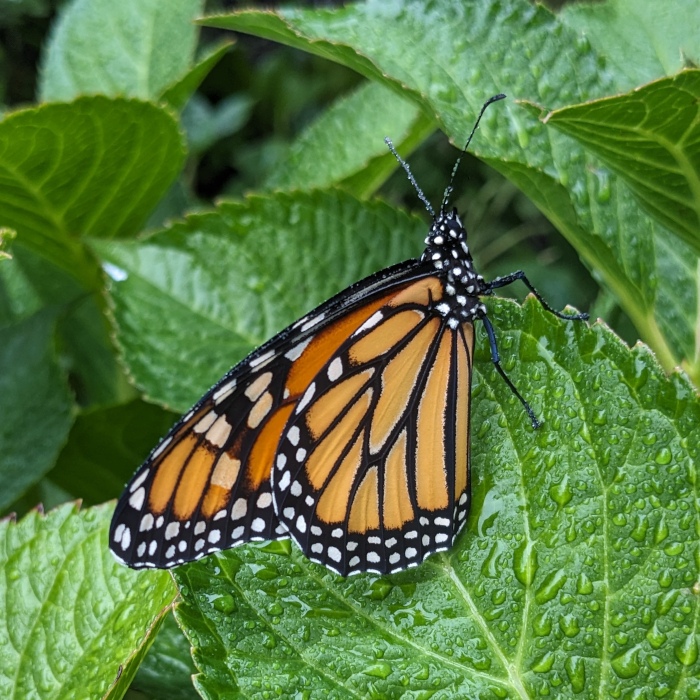
This is a monarch butterfly.
Many people will even move the caterpillars into butterfly tents where they can eat milkweed safe from harm. They will climb to the top of the tents to turn into chrysalises. When they emerge, they can be let outside once their wings have dried. Each summer, we raise monarchs that visit our garden. Although, some years we are too lazy to break out the tents! (They’ll be fine outside, right?)
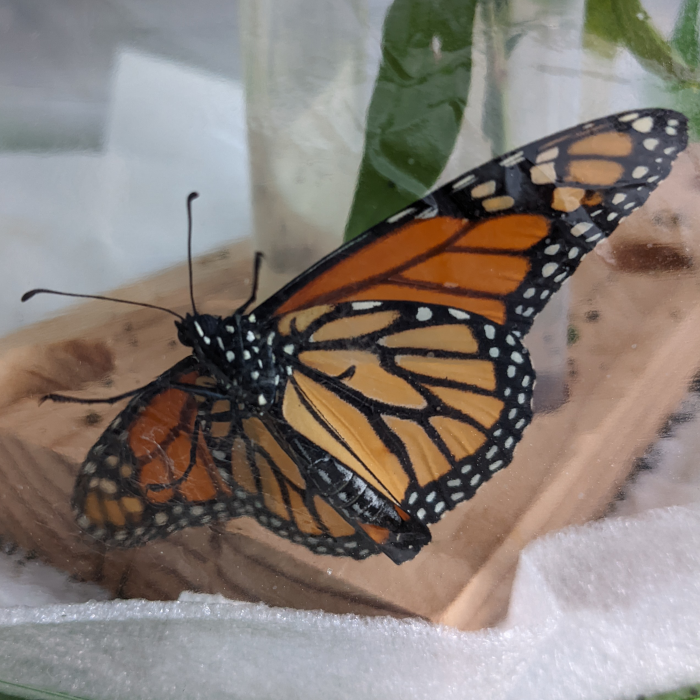
"Let me out!"
If you’re wondering what the caterpillars look like, they have a mix of yellow, white, and black stripes. They also have two sets of filaments (the longer pair by their head), which look like fake antennae. If you give them a touch, they will react!
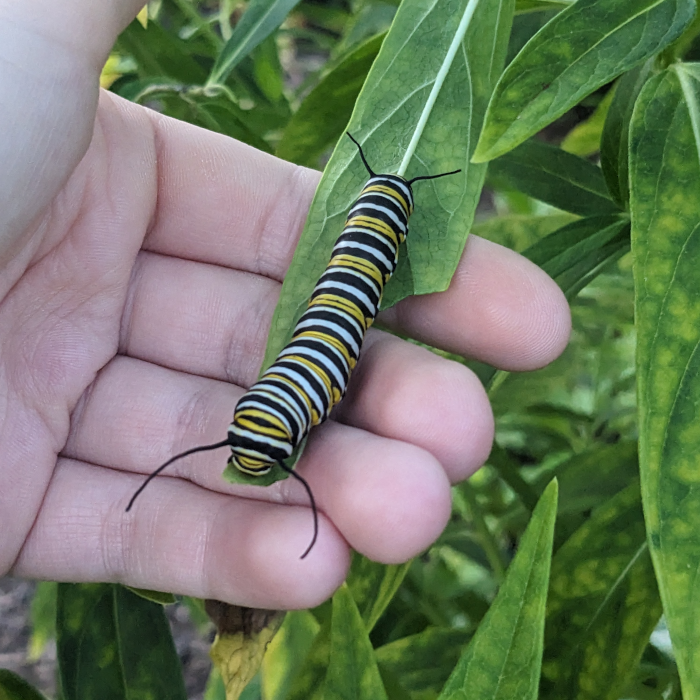
We named this one "Fatty" for his or her large size and voracious appetite.
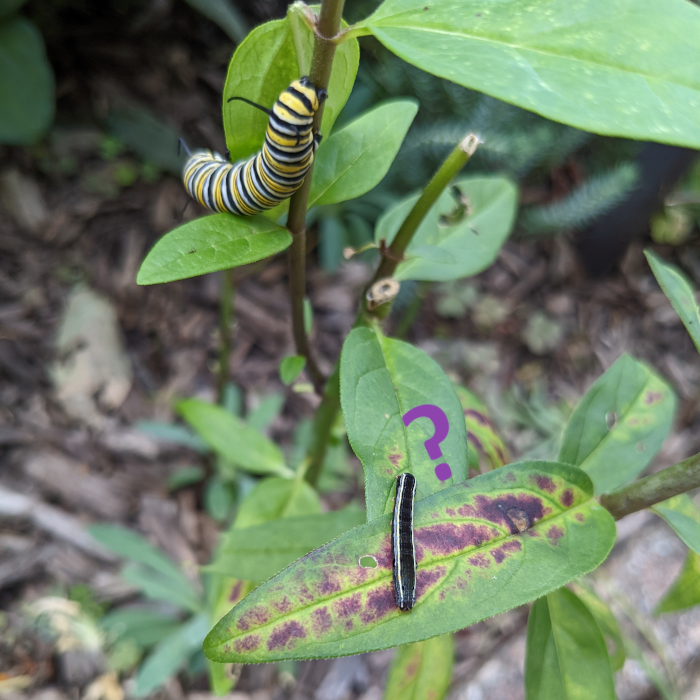
An impostor?
In these pictures of the caterpillars, you can see them on their most favorite plant - milkweed. If you break the leaf, you will see a white milky substance come out. Most animals find milkweed to be poisonous, but for the monarch, it’s a delicacy. It makes them poisonous in turn, however, which is all part of the master plan.
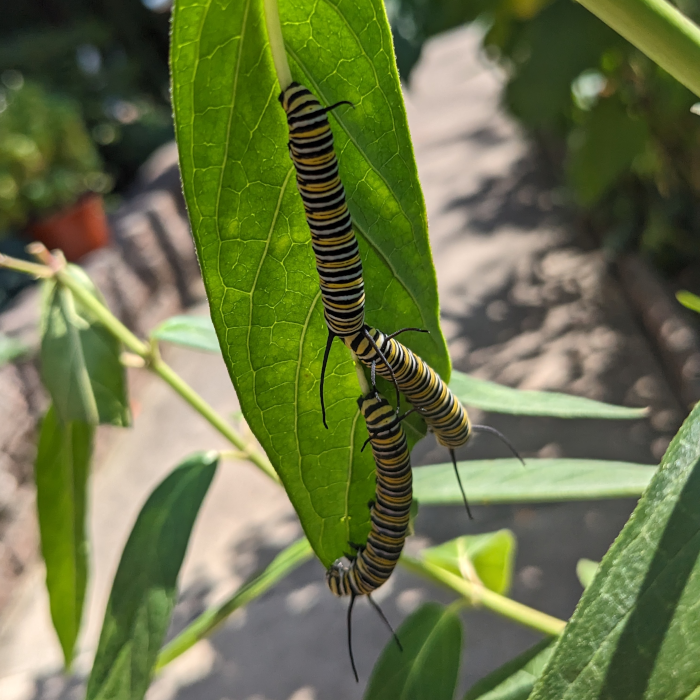
These three continued to meet up on the same leaf, even after being separated. Perhaps monarch friendship can exist?
Don’t be fooled. You can safely pick them up; they will not hurt you. Don’t mistake their docility with humans for extroversion, however. If one monarch caterpillar encounters another on his or her leaf, expect a brawl between the two as they headbutt each other for control of the leaf. Although the mother will do her best to lay her eggs on separate plants, if you’re lucky, you will witness this comical “fight”.
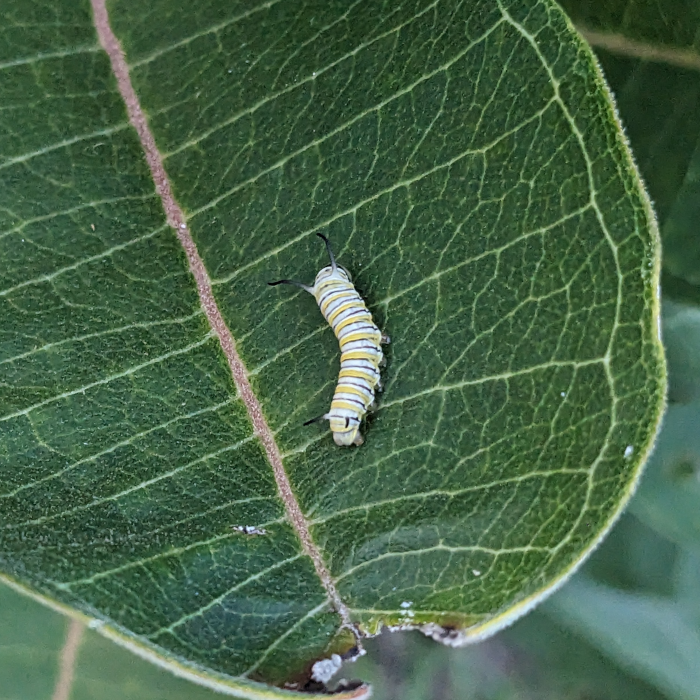
The babies are always adorable.
The eggs are small and yellow. The mother will lay them on the underside of milkweed leaves. With a good eye, you can spot them. But generally, you may not notice them until they have hatched and reached their third instar stage. The younger caterpillars are much smaller with less defined features and coloration. Their heads are also cartoonishly big compared to their bodies.
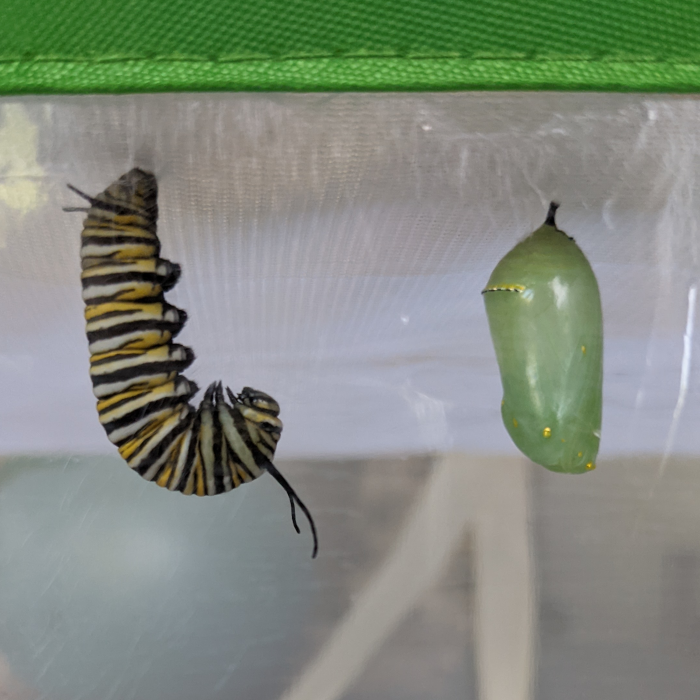
Note the J formation. The chrysalises have gold accents.
Once the caterpillar has sufficiently fattened up (ahem, reached 5th instar) and is ready to transform, he or she will generally leave their host plant for another location. If you’re searching your garden for the chrysalises, look on the undersides of leaves on plants other than your milkweed. They are very good at finding cover and remaining hidden, especially as the chrysalises are green and blend in with other plants.
A caterpillar that is ready to transform will attach itself with a silky butt to a surface and form a J shape. After some waiting and wriggling, its skin will break off and the chrysalis underneath will remain.
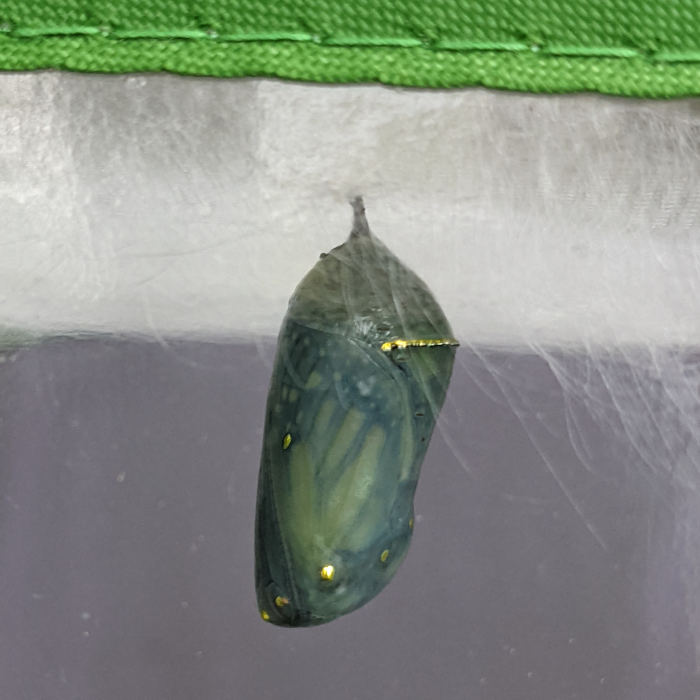
If you look closely, you can spot certain features of the adult butterfly when you look at the chrysalis. This is true of other butterfly species too.
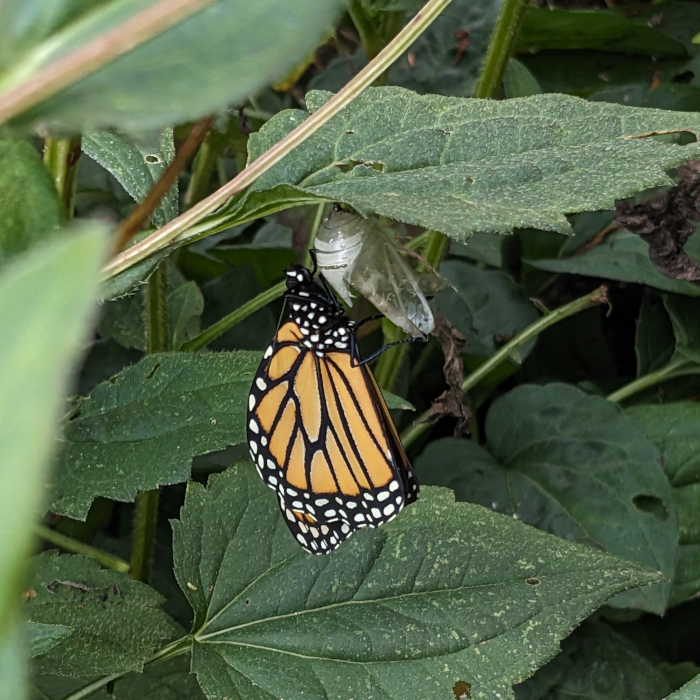
"How did I ever fit in there?"
When the monarch butterfly is close to emerging, the beautiful wing pattern will begin to show through the chrysalis and the chrysalis will darken. Keep a close eye at this point. Soon enough, the butterfly will break free and spread its wings. When it emerges, its wings are damp and it must air them out. You will be able to interact closely with the butterfly now without it flying away (or at least, not very far.) They don’t mind sitting on your finger or your shirt.
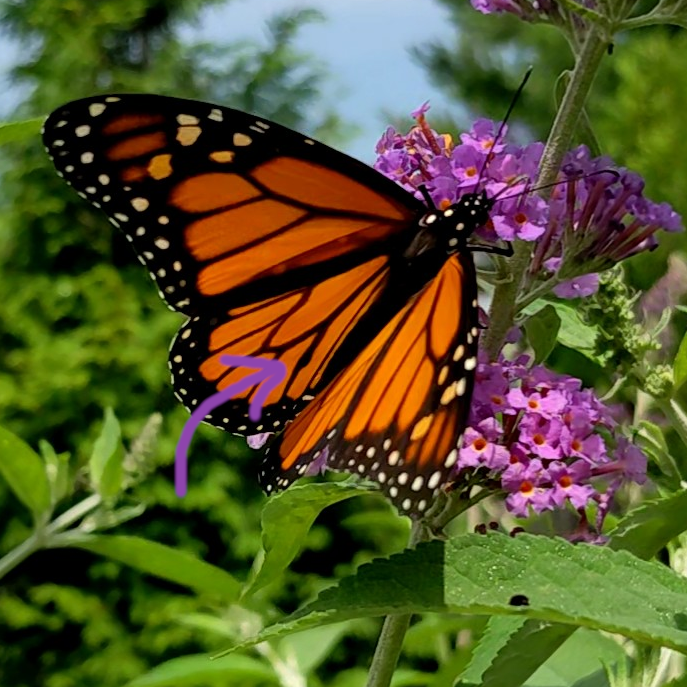
It takes a bit of a trained eye to see the male's dots. Raise your own monarchs and you'll get better at telling apart the boys and girls with time.
If you want to know if you have a male or a female butterfly, wait for it to open its wings. Males will have a small black dot on each hind wing that intersects with a stripe. Females will simply have a normal stripe. It is thought these dots emit pheromones to attract females.
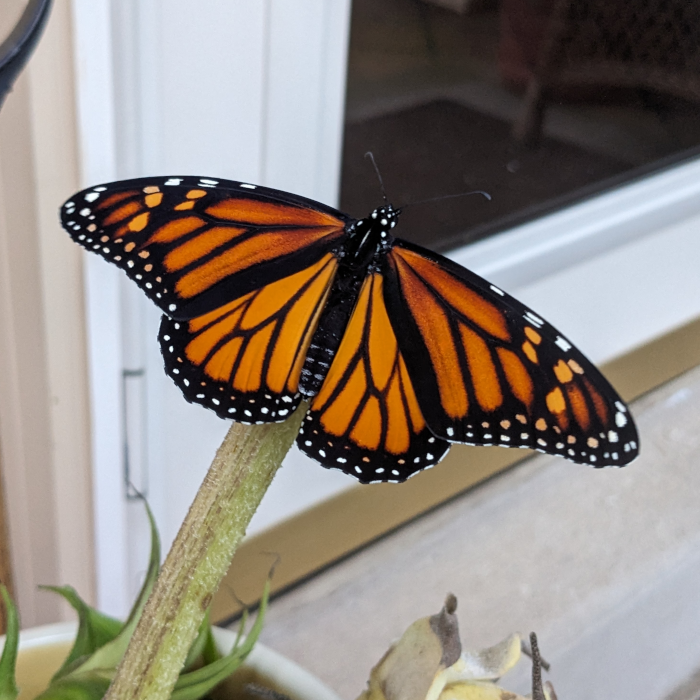
A true queen. (And she does not have dots, because she is not a stinky boy.)
Let me know if you have any monarch butterfly questions. By the way, did you know there are several subspecies of monarchs? Our monarchs are migratory monarchs and their range extends further north than the range of other monarchs, but other subspecies can be found in South America and the Caribbean, for example. Hawai’i also has a white color morph of the monarch.
Treat your monarchs with the love and respect they deserve. They are royal after all.